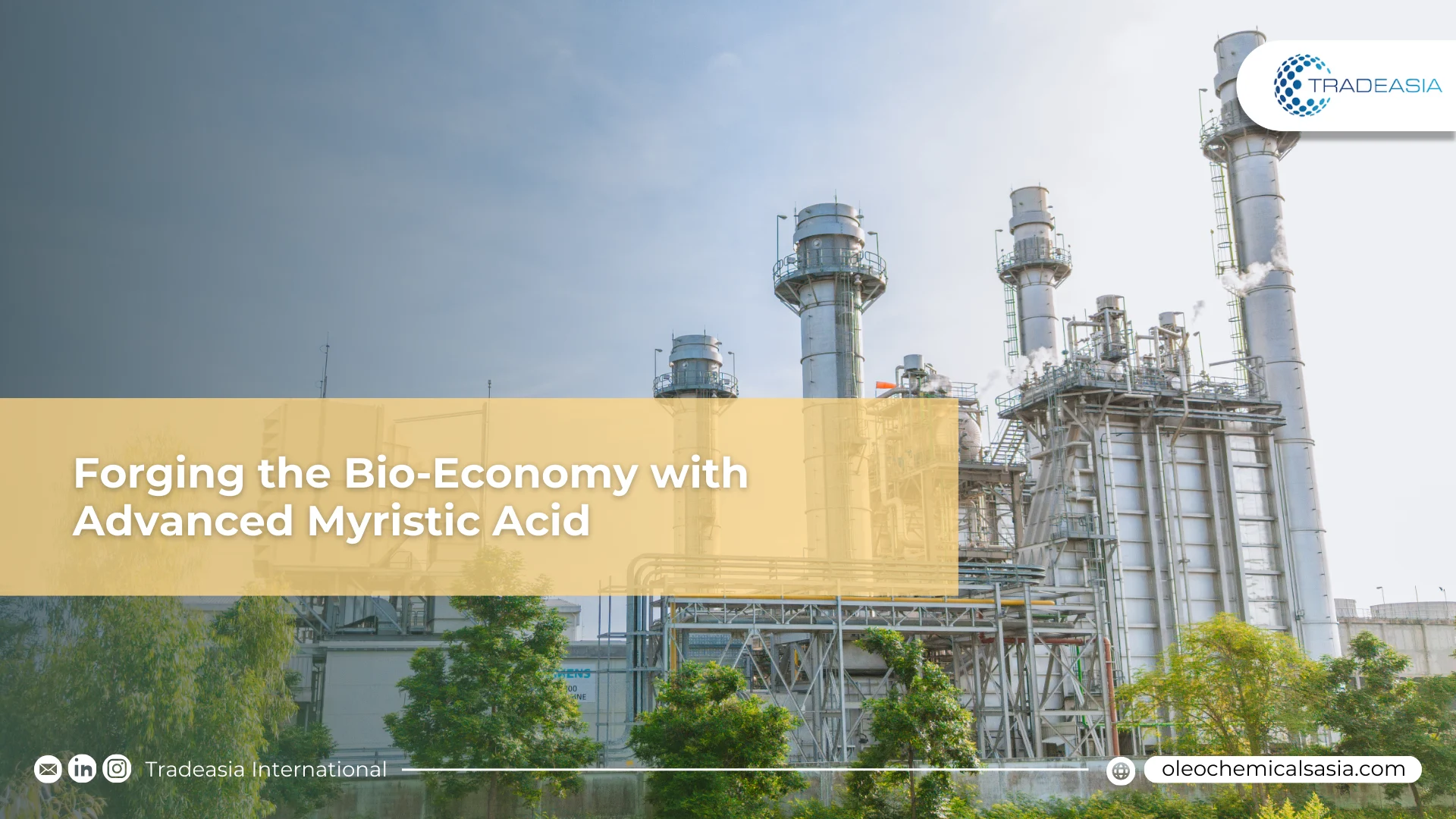Article
18 September 2025
Forging the Bio-Economy with Advanced Myristic Acid
Palm Derivatives

Table of Content
- From Fatty Acid to Eco-Friendly Plastic
- Answering the Market’s Call for Greener Chemistry
Article
18 September 2025
Palm Derivatives

The most powerful force shaping the future of the chemical industry is the global transition to a sustainable, circular economy. In this new paradigm, innovative R&D is recasting materials like palm-derived Myristic Acid as essential building blocks for a greener future. This shift presents immense commercial opportunities, and Tradeasia International is committed to being a partner in this transition, connecting businesses with the sustainable oleochemical solutions of tomorrow.
A primary focus of green R&D is using Myristic Acid as a renewable carbon source for biodegradable polymers. Researchers are successfully creating bio-polyesters and polyamides designed to replace petroleum-based plastics in packaging, textiles, and other single-use applications, targeting a share of the massive $600+ billion global plastics market. The performance goal for these new materials is clear: to achieve over 90% biodegradation within 180 days, offering a true end-of-life solution that conventional plastics cannot.
This R&D is directly responding to powerful market signals. With over 70% of consumers globally willing to pay more for sustainable products, the demand for green chemistry is undeniable. Researchers are developing myristate esters into non-toxic, eco-friendly solvents to replace harmful VOCs, a market driven by tightening regulations. As industry experts at Oleochemicals Asia consistently report, sustainability is no longer a niche—it is the central driver of chemical innovation and long-term value. This ongoing R&D ensures Myristic Acid will be a key player in the sustainable economy for decades to come.
Sources:
Reports on the Bio-Economy - World Economic Forum
Asia’s Growing Demand for Green Chemicals - https://www.google.com/search?q=Oleochemicalsasia.com
Green Chemistry Journal - Royal Society of Chemistry
We're committed to your privacy. Tradeasia uses the information you provide to us to contact you about our relevant content, products, and services. For more information, check out our privacy policy.
Leave a Comment